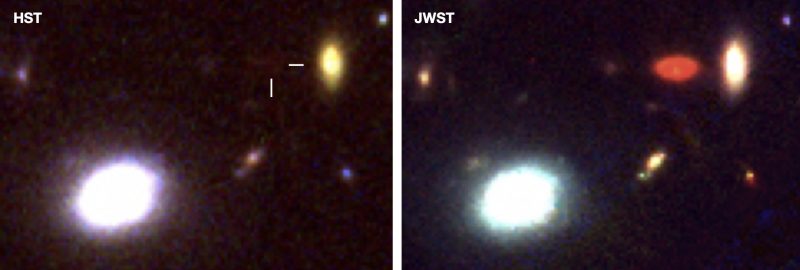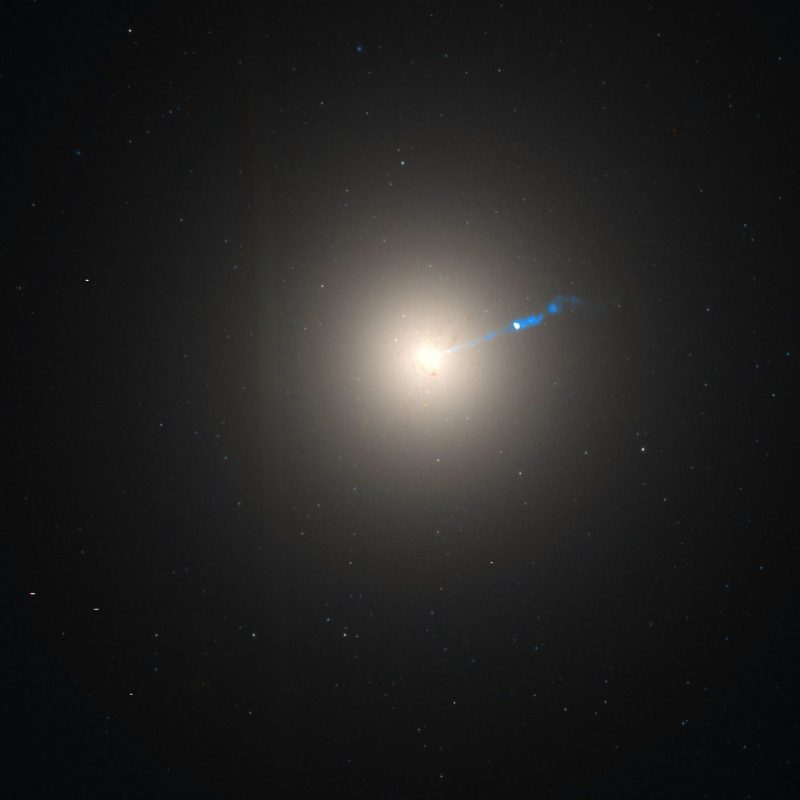
UFOs in Webb’s range
The James Webb Space Telescope (JWST) is the successor to the Hubble Space Telescope (HST). It can see farther away in space, and so farther back in time. In operation only since this summer, it’s already discovering things Hubble couldn’t see, including some massive, deep-red, disk-shaped galaxies. Astronomers call them HST-dark galaxies. In a paper published on arXiv on August 2, 2022 (but not yet peer-reviewed), a team of scientists are also calling these galaxies Ultra-red Flattened Objects, or UFOs.
And – to Webb’s “eye” at least – they do have the classic, sci-fi look of a flying saucer!
Deep-red galaxies not visible to Hubble
These deep-red, disk-shaped galaxies have a redshift (or z) between 2 and 6. That value means we’re seeing them as they were in the universe 10.3 to 12.7 billion years ago. So they’re definitely not our next-door neighbors. But they are within the range of what Hubble could image, if it could see their red light.
Webb can see these “HST-dark” galaxies because it observes in infrared light, which is the part of the spectrum where these galaxies shine. The team that published the new study, led by Erica Nelson of the University of Colorado, Boulder, found 29 of these HST-dark galaxies. The galaxies have a significant amount of dust, which makes their light redder and hides them from Hubble’s vision. But Webb’s infrared sensors can see through that dust, making the UFOs pop into view.
The full sample. We figured some bright red things (like SMGs) would pop up, but this big collection of seemingly fully formed extremely red galaxies was not what we expected. Credit to Erica Nelson, Wren Suess, Rachel Bezanson, Sedona Price, @gbrammer and their co-authors! pic.twitter.com/2soSILdsJW
— Pieter van Dokkum (@DokkumPieter) August 4, 2022
Webb’s galactic discoveries
Compare the UFOs to the record-breaking distant galaxies that Webb has spied, which have redshifts of 11-20. That would be when the universe was between 400 million and 150 million years old. The UFOs, with a redshift of 2-6, existed when the universe was between 3 1/2 and 1 billion years old (out of its current 13.7 billion years of age). So these galaxies aren’t real close to us in time, but they are still closer than the record-breaking discoveries.
UFOs at cosmic noon
The astronomers refer to the time period that UFOs thrived as cosmic noon. The early ages of the universe when galaxies began to grow was the cosmic dawn. Then cosmic noon arrived, about 3 billion years after the Big Bang. Astronomers think most of the universe’s stars and black holes formed around the time of cosmic noon. And now astronomers say that these UFOs, or dusty star-forming galaxies undergoing extreme starbursts, dominate the total star formation rate budget of the universe during cosmic noon. So, as the paper said, since we have not yet been able to study what we could not see:
… we do not yet fully understand the growth of the most massive galaxies at cosmic noon.
From flattened to bulging
The scientists also said that these massive, dusty UFOs may be the progenitors of today’s large elliptical galaxies. They’re surprised by this finding, because astronomers believed that the bulging elliptical galaxies we see now would have already had that bulging shape at an early age. But as the paper said:
Perhaps the most noteworthy result stems from the flattened shapes of these HST-dark galaxies. These massive, star-forming galaxies are the likely progenitors of today’s massive galaxies, which tend to be bulge/spheroid-dominated … The expectation may have been that the stellar bodies of these objects would already host significant bulges. This, however, is not what we observe in this sample.

Webb is expanding our knowledge
The discovery of these UFOs is helping astronomers get a better picture of the universe at a more recent age. As the paper noted:
The stellar masses, sizes, and morphologies of the sample suggest that some could be progenitors of lenticular or fast-rotating galaxies in the local Universe. The existence of this population suggests that our previous censuses of the universe may have missed massive, dusty edge-on disks, in addition to dust-obscured starbursts.
The paper concluded:
This sample highlights the fact that the JWST discovery extends studies of galaxy stellar structures to later cosmic epochs during which we thought we had a reasonable census of the universe already.
Bottom line: Astronomers analyzing new Webb images have found UFOs, or Ultra-red Flattened Objects. These UFOs are disk galaxies that only become visible in infrared light.











